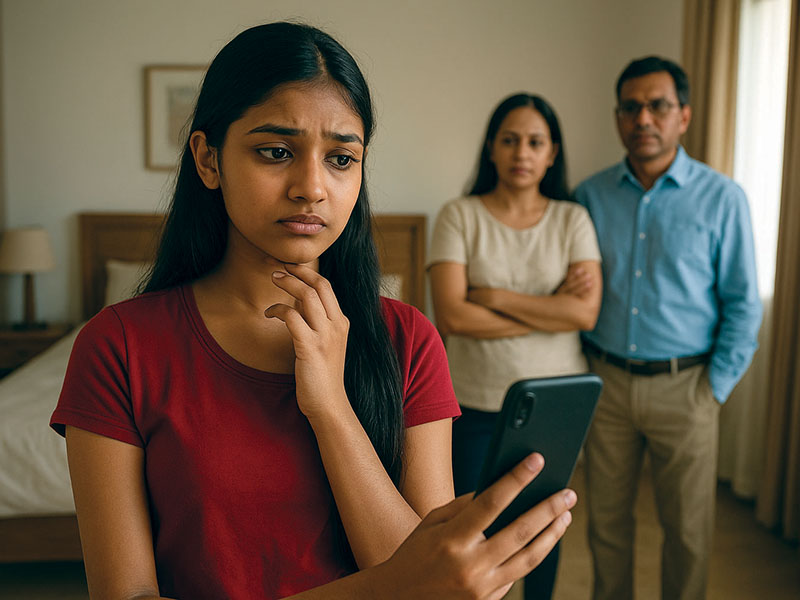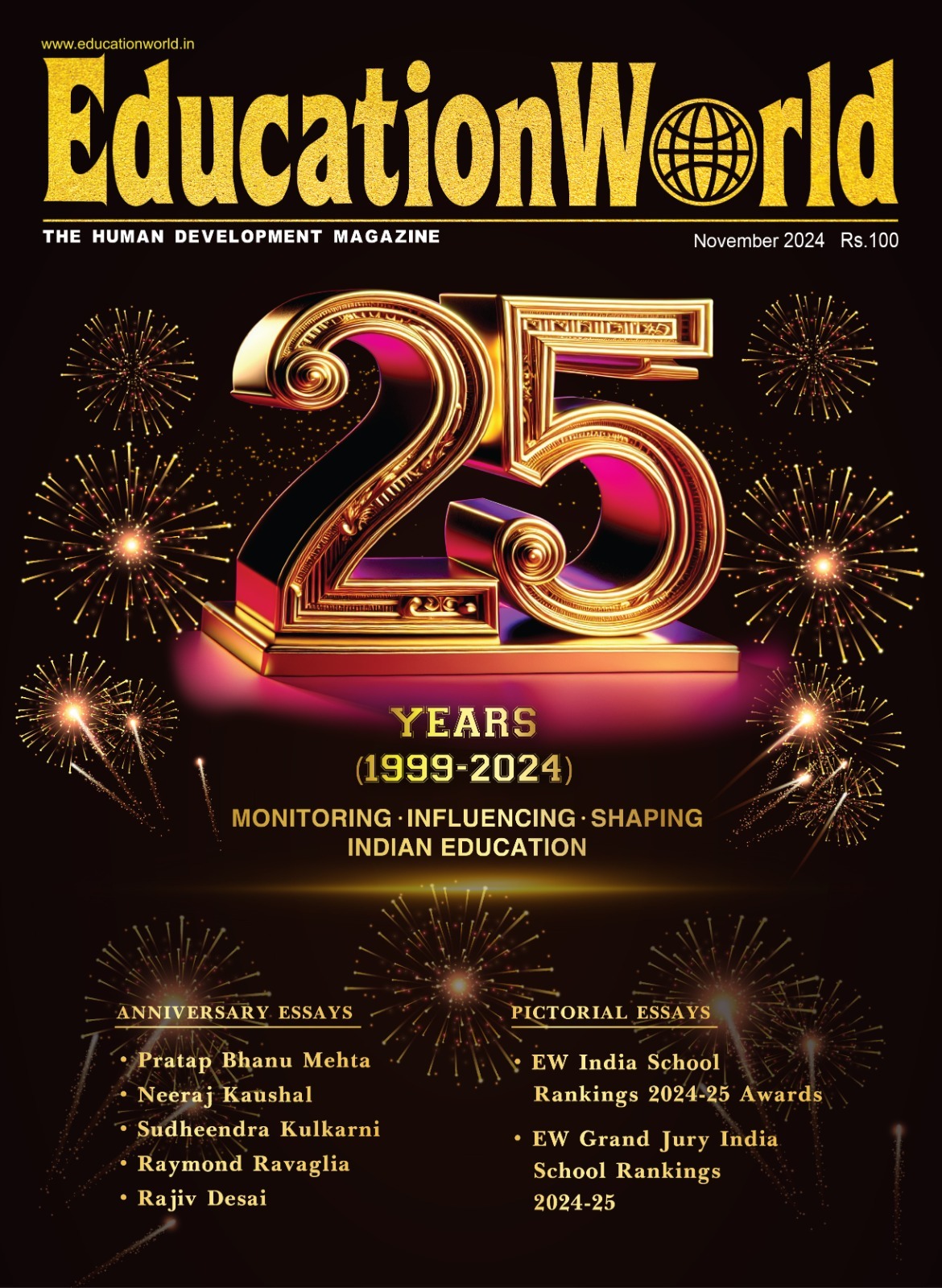Beware! Body beautiful obsession is dangerous
Consistent exposure to carefully curated body images, digital filters that eliminate all flaws, and influencer-driven standards of body beautiful have generated an environment in which comparisons have become inevitable and often damaging. Endless scroll of perfect bodies and faces has ignited unrealistic expectations, leading many — especially teens and youth — to internalise distorted ideas of perfect figures and chiseled, blemishless faces
Baishali Mukherjee

This is an age when millions of photos are being clicked for posting online. Apps such as Instagram and Facebook have become theatres of approval, where hearts, likes and comments have intensified the urge to look bold, beautiful and modish. Yet this new-age phenomenon birthed by internet connectivity and the irreversible digital revolution is extracting a big price from societies around the world. India, which negligently hosts the world’s largest child and youth population, is no exception.
On July 24, a 17-year-old boy in Colachel, Tamil Nadu died after following a fruit juice-only diet prescribed on YouTube. Earlier on March 8, an 18-year-old girl in Kannur, Kerala, succumbed after following a starvation diet. These are only the latest of a growing number of fatalities due to teens and youth following crash diets and undergoing risky cosmetic surgery in the quest of bodies and faces beautiful for display on social media platforms. Across the country, millions of citizens starting form early teens to the middle aged and beyond are ready and willing to suffer pain and near-starvation to allay weight gain and body image anxieties.
Social media is now the most powerful force shaping how people evaluate themselves — especially millennials and Gen Z. Consistent exposure to carefully curated body and facial images through digital filters that eliminate all flaws and imperfection, and influencer-driven standards of body beautiful have generated an environment in which comparisons have become inevitable and damaging. Endless scroll of perfect bodies and faces made beautiful by a global $335 billion cosmetics and beauty products industry — the annual output of this fast-growing industry in India is valued at Rs.2.43 lakh crore — has ignited unrealistic expectations, leading many, especially teens and youth to internalise distorted ideas of perfect figures and chiseled, blemishless faces. This new internet age phenomenon is emerging as one of the most troubling consequences of the world’s obsession with digital media.
A March (2025) study covering 55,000 study participants between 2008-24, published in Science Direct, a London-based online platform that draws data from 23 million published features/blogs, 3.8 million open access essays and 48,000 books on science, health and technology, reported strong linkage between online social comparisons and negative body image. Those who compared themselves with online peers are “significantly more likely to struggle with body image issues, manifesting eating disorders, and suffer low body image.”
Unsurprisingly mental health professionals worldwide are warning that social media approval addiction results in heightened anxiety, lower self-esteem, increased body dissatisfaction, and eating disorders, symptoms exacerbated by photo-editing apps. A rising number of medical practitioners — and mental health gurus in particular — are veering around to the opinion that what social media platforms provide in the form of visibility and global reach, they take away from mental health and emotional well-being. A 2017 survey by the American Academy of Facial Plastic and Reconstructive Surgeons revealed that 55 percent of patients specifically requested procedures to improve their physical attributes. Almost a decade later, that’s a gross under-estimate. In India, rising social media addiction within the fast-expanding middle class — especially among millennials and Gen Z — is generating rising social anxiety, lower confidence, diminished body image perception and increased resort to cosmetic surgery.
Across the country, brain-washed by Hollywood (faithfully imitated by Bollywood) where film stars’ ugly red patches and blemishes are concealed by America’s $62 billion cosmetics and creams industry, millions of youth and adults are resorting to cosmetic surgery and/or slathering on mercury-infused creams and lotions to lighten their natural and aesthetically pleasing tanned skin tones, even at the risk of inviting cancer and other maladies.
“Numerous research studies and clinical experience indicate that social media exposure strongly affects body image and self-esteem. Earlier, such anxiety manifested in youth after they attained 17-18 years of age. But now children as young as 12-13 are becoming anxious about their looks and physical attributes. Boys, once relatively immune, are now heavily influenced by online ‘ideal’ body types. Within the fast-expanding middle class in particular, becoming fairer, hairless, muscular, pierced, and styled is becoming a national obsession. When youth don’t receive online validation and approbation, they often sink into depression, self-harm, and deep frustration. Parents struggle to cope as children demand costly and dangerous beauty treatments,” says Dr. Jai Ranjan Ram, a leading psychiatrist specialising in child and youth mental health counselling and treatment at Apollo Multi-Specialty Hospitals, Kolkata.
According to Dr. Ram, such obsession with good looks and peer approval is also harmful for physical health as hours spent online reduces physical activity and participation in sports and games. Many adolescents feel powerless in other areas of life and turn to body modification as the one thing they can control. Therefore it has become a duty of latter-day parents and guardians to reiterate to children that curated celebrity and influencer good looks and body types are exceptions, not the norm, and that pursuit of perfect profiles and body types can have severe consequences leading to self-harm, even suicide. “Children must be taught that while homes, schools, and apparel can be changed, one’s body is a lifelong home that needs care, not torture,” adds Ram.
To counter this spreading epidemic, Roma Kumar, co-chairperson at the Institute for Psychiatry, Sri Ganga Ram Hospital, Delhi, advocates school awareness programmes, counseling for the addicted, and clinical refusal when mental health risks outweigh the benefits of cosmetic surgery. “Responsible social media use — with parents imposing screen time limits, device-free zones at home, and content monitoring — is critical. Guidance from parents, educators, and counselors is necessary. Collaboration between schools, governments, and social media platforms has become important to curb youth narcissism,” says Kumar.
Focus on physical fitness not attributes. Physical fitness experts emphasise that maintaining physical fitness through playing games and sports and working out enjoyably, is more advantageous than heavy grunts and sweat training to build bulging muscles and trim waists. “Your body isn’t a problem to fix, it’s your vehicle for life. Respect it, fuel it, exercise it to maintain it in good condition, treat it kindly. Focus on progress, not perfection. When body image becomes self-care instead of self-criticism, it shifts from comparisons to growth,” counsels Yash Agarwal, celebrity fitness coach and founder of the Kolkata-based Yash Fitness.
“The key is to redefine body image, valuing fitness not as chasing an ideal, but building health, strength, and confidence. A fit body isn’t necessarily beautiful; true fitness requires resilience, balance, and freedom from ailments,” adds Agarwal, who has trained 100 fitness enthusiasts, conducted 50 workshops, guided top business leaders and leads a team of 40 experts serving 200 corporate clients globally.
Parents need to battle this silent epidemic. Children’s social media addiction and resultant poor body image perception have emerged as major parenting problems. Nineteen-year-old Delhi-based Arushi (name changed) became so obsessed with social media image building that she pressed her parents for cosmetic facial surgery. When her pleas were refused, she attempted suicide by overdosing with sleeping pills. Fortunately, her mother’s timely intervention saved her life and ensured that she received psychiatric help. Avantika’s (name changed) mother faced a similar crisis when her 21-year-old daughter insisted on undergoing rhinoplasty, believing surgery was the only way to match the image she wanted for herself.
Against this rising demand within India’s fast-expanding middle class, it’s instructive to learn that a rhinoplasty (aka nose job) can set parents back by Rs.40,000-2.5 lakh and lip augmentation surgery by Rs.4.5 lakh. Unsurprisingly, India’s cosmetic surgery market is experiencing rapid growth, with a projected market value of US$11.5 billion (Rs.95,450 crore) by 2030.
The rising popularity of Indian cinema, especially Bollywood feature films and their regional clones, has amplified body and facial obsession of social media-influenced teens and youth. Several leading Bollywood actresses, already beauty icons, have openly admitted to undergoing cosmetic surgery from lip enhancements to nose jobs. In 2020, Mumbai based rising film star Mishti Mukherjee reportedly died because of complications arising from ketogenic dieting. With the spread and easy accessibility of Hollywood and Bollywood cinema over movie streaming platforms such as Netflix, Prime Video and Reliance Jio among other streaming platforms, Indian youth are increasingly regarding cosmetic surgery, and face and body alterations as the new normal as they unwittingly chase unrealistic body beautiful standards that heighten anxiety and erode self-esteem.
Comments Dr. Kiran Modi, Founder of Udayan Care (estb.1994), an NGO providing mental and emotional well-being and career counselling services to 40,000 children and youth in 38 cities countrywide: “Social media projecting unrealistic beauty standards has prompted a rising number of youth to strive to improve their body shapes and physical attributes. This has resulted in a fast-multiplying number of teens struggling with low self-esteem, anxiety, and eating disorders. In Udayan Care, we counsel and mentor teens by creating safe spaces for girls to express themselves and focus on inner growth. Our programmes also include digital literacy and positive self-image workshops, helping teens and youth to navigate social media, question stereotypes, and build resilience with guidance from mental health professionals,” says Modi.
Kolkata-based Indrani Mukherjee, Rector of Holy Home (estb.1985), a K-12 co-ed CISCE-affiliated school, advises parents to address social media induced body image management issues squarely and urgently. “Parents and education institutions need to seriously educate youth about the harmful effects of trendy diets and cosmetic surgery. Media literacy programmes in schools, responsible cosmetic and clinical practices, and campaigns promoting body positivity and mental well-being are all crucial. Most needed is recognition that social media addiction is not trivial — it is shaping identity, aspirations, and even survival,” warns Mukherjee.
Even if belatedly, a consensus is emerging within the educators’ and counsellors community, that in the matter of enhancing physical attributes, better can be the enemy of good. Although it’s natural for all people — young and old — to look pleasing, it’s important to remember that building an attractive personality requires more than beauty pageant physical attributes. Dr. Kiran Modi (quoted earlier) has an important valuable, message for young and impressionable youth: “You are much more than your reflection. Be authentic, value your body as a vehicle for your dreams, and focus on developing your talents, capabilities, and passions. Don’t let algorithms, filters, and the surgeon’s knife determine your self-worth. True beauty lies in confidence, kindness, and courage — qualities that cannot be edited or filtered.”
India ungraciously hosts the world’s largest poorly educated — hence vulnerable — teens and youth population whose number is estimated at 253 million. Currently they are massively attracted to – and overwhelmed — by social media platform options. Contrary to popular opinion the internet and access to the worldwide web also offers the option to enhance knowledge and develop life skills that enable development of well-rounded balanced personalities. Even at the risk of short-term unpopularity, parents should limit children’s access to harmful narcissistic social media platforms and re-direct them to websites that propagate positive life skills and holistic personality development. In the long run when they mature into well-balanced adults, their children will thank them for it.
Distorted reality
The rising popularity of miracle weight loss diets, ‘safe’ drugs such as Ozempic and cosmetic surgery is not unconnected with intensifying social media addiction of the general populace, and teens and youth in particular. On popular apps and platforms such as Instagram, Tik-tok and Facebook millions of people starting from early teens to trendy oldies are enamoured with images of movies stars, fashion models and socialites with hour-glass figures and perfectly proportionate faces.
Photo editing apps significantly alter visual appeal of individuals by digitally enhancing or modifying their physical features to create an idealized version of themselves.
Enhancement of facial features. Apps like Facetune and Faceapp allow users to reshape noses, enlarge eyes, and slim down cheeks, aligning their looks with societal beauty standards. This can make a person appear more attractive than in their natural state, heavily influencing viewers’ perceptions.
Skin smoothing and blemish removal. Many apps provide filters and touch-up tools that erase imperfections like acne, wrinkles, uneven skin tone, contributing to flawless skin projection.
Lighting and color adjustments. Subtle tweaks to lighting and color can alter features conferring a more vibrant and attractive image.
In short, photo editing apps change perceived attractiveness by digitally tailoring features to fit societal standards of beauty. Social media photos create unrealistic body proportions primarily through digital editing techniques such as ‘Puppet Warp’ and ‘Liquify’ in software like Photoshop.
Other common edits include removing natural body curves or folds and altering muscle and bone shape for exaggerated silhouettes. These techniques often produce proportions that are anatomically unrealistic, like impossibly slim waists or overly long limbs, contributing to distorted beauty standards on social media.
Pricey vanity
For the rising number of teens and youth — and adults — dissatisfied with their endowed physical attributes, it’s also pertinent to bear in mind that cosmetic surgery interventions come at not insignificant prices. The cost of cosmetic surgeries for the lip, nose, and eye varies considerably based on the specific procedure, surgeon’s expertise, geographic location, facility fees, and the complexity of the intervention.
Since there is also and always the risk of an intervention – especially a surgery — going wrong (see p. 14), which would necessitate ameliorative repair surgery, it is advisable to avail the services of thoroughly qualified medical professionals with specialist qualifications in cosmetic surgery and dermatology. Moreover, since experienced surgeons are unlikely to be available in small-town India, add the costs of travel, lodging and hospitalization in metros which can be considerable.
Arguably a lesser outlay invested in developing life skills such as singing, dancing and elocution and/or other performing arts could compensate for modest looks and physical attributes. Contrary to popular opinion people in search of love and companionship are not as influenced by good looks and great figures as by likeable entertainers.
For those who are unpersuaded by this opportunity-cost argument, the price of cosmetic surgery operations range as under.
- The cost estimates provided are heavily influenced by location. Prices in metro cities are generally higher than in smaller cities. However, metros are likely to house the most qualified and experienced cosmetic surgeons. Their fees are likely to vary according experience and reputation.
| Procedure Category | Common Procedure | Estimated Cost Range |
|---|---|---|
| Lip Cosmetic Surgery | Lip Augmentation (Surgical or Fillers) | Rs. 15,000 – 80,000 |
| Lip Reduction (Surgical) | Rs. 25,000 – 80,000 | |
| Nose Cosmetic Surgery | Rhinoplasty (Nose Job) | Rs. 50,000 – 200,000 |
| Eye Cosmetic Surgery | Blepharoplasty (Eyelid Surgery) | Rs. 30,000 – 150,000 |
Cosmetic surgery risks
The often-heavy monetary expenditure that has to be incurred for cosmetic surgery aside, individuals aspiring for artificially sculped bodies and supermodel facial features also have to weigh the dangers of beauty enhancement procedures. Obviously, there is a possibility — however remote — of simple procedures going haywire, or else surgeons and hospitals wouldn’t require patients to sign indemnity agreements. Therefore, before volunteering for cosmetic surgery, it’s important to bear the following risk possibilities in mind.
Infection. This is a common risk in India. Because of poorly trained para-medics, there’s always the risk of poor hygiene, contaminated instruments, excessive/ deficient anaesthesia, inadequate post-operative care.
Bleeding and hematoma. Excessive bleeding can occur during or after surgery, sometimes requiring re-operation.
Nerve damage. Temporary or permanent numbness, tingling, or loss of sensation in lips, nose, breasts.
Scarring and asymmetry. Poor wound healing can cause thick, raised scars or uneven results.
Anesthesia risks. Adverse reactions can include respiratory distress, allergic shock, or in rare cases, death.
Tissue necrosis. Loss of skin or fat tissue due to interrupted blood supply, especially after liposuction and facelifts.
Implant complications. For breast, chin, or buttock implants, rupture, leakage, displacement may occur over time.
Poor aesthetic outcome. Results may differ from expectations, causing distress or need for revision surgery.
Moreover, there are well-documented psychological risks of cosmetic surgery. Among them:
Body Dysmorphic Disorder. Some patients have unrealistic expectations generating psychological conditions that surgery cannot address.
Post-surgery depression. Emotional low after surgery, often caused by pain, swelling, or regret.
Addiction to surgery. Some patients undergo repeated procedures seeking “perfection,” leading to permanent dissatisfaction.
















Add comment